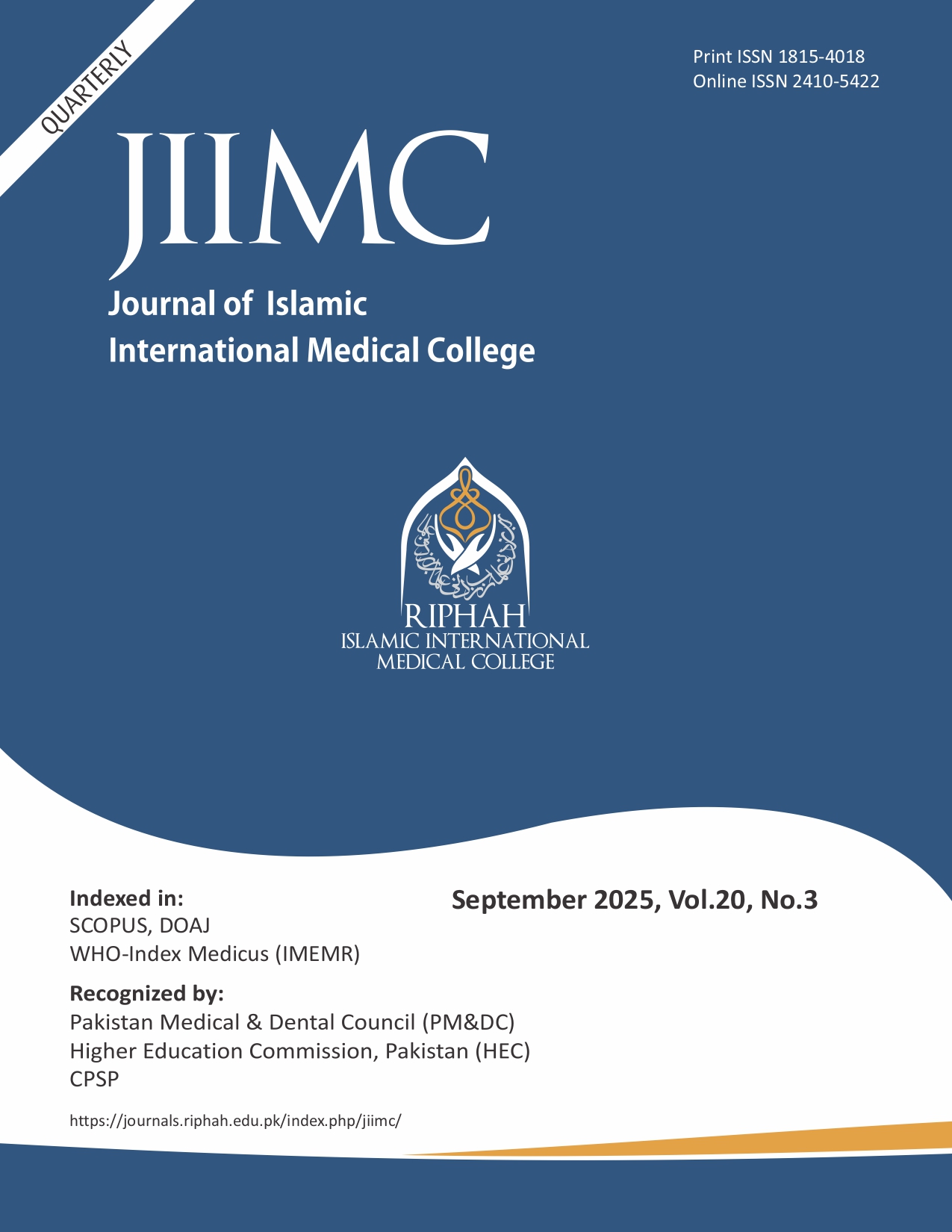Prevalence of Urinary Tract Infection (UTI) In Malnourished Children Aged 1 Month to 5 Years: A Study from The Children's Hospital and Institute of Child Health, Multan
Keywords:
Bacterial Infection, Severe Acute Malnutrition, UTI, Urine Examination.Abstract
Objective: To identify the prevalence of urinary tract infections in malnourished children and the predominant pathogens and assess their antibiotic sensitivity pattern.
Study Design: A retrospective observational study.
Place and Duration of Study: Conducted at Nutritional Stabilization Centre of The Children's Hospital and The Institute of Child Health Multan, from 01.01.2023-31.12.2023.
Materials and Methods: Children aged 1 month to 5 years with severe acute malnutrition (weight-for-height < –3 SD with or without complications or bilateral pedal edema) based on WHO criteria were included. Urine samples were collected by age-appropriate methods; midstream clean-catch for children >3 years and pediatric urine collection bags for younger children, after proper perineal hygiene and analyzed by the hospital's pathology department through routine examination and culture. Results were analysed by using SPSS version 23.0. with frequency distributions and paired t-tests applied; significance was set at p < 0.05. Results: A total of 247 patients were included in study. Of these, 62 children (33%) had culture positive UTI. Escherichia coli was the most frequently isolated pathogen (64.5%), followed by Klebsiella species (19.3%). Antibiotic sensitivity varied by organism, indicating the need for pathogen-specific treatment protocols.
Conclusion: Urinary tract infections (UTIs) are highly prevalent among children with severe acute malnutrition, with Escherichia coli identified as the predominant pathogen, followed by Klebsiella. Routine screening for UTIs in malnourished children admitted to nutritional stabilization centers is recommended to facilitate timely interventions, improve clinical outcomes, and reduce morbidity.


